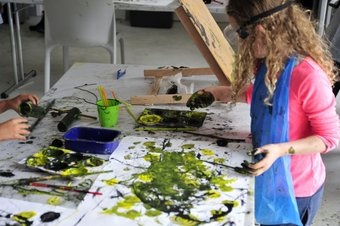Developing student leaders: A leadership experiment?
When it comes to learning, I am a bit of a “theory first” person. I prefer to have a good understanding of the concepts and principles involved before I risk trying anything. So, when it comes to the question of “what do we need to develop student leaders?” (which I introduced in my previous post), the first thing that comes to my mind is that we need to run seminars or classes that provide information and the opportunity to explore fundamental principles of leadership.
Of course, this is not a bad place to start, and in-depth discussion of principles of leadership needs to be part of the development process. However, I have recently come to see the value of a different starting place: practical leadership experience. To risk-adverse people like me, this sounds like learning to swim by jumping straight into the deep end (and probably drowning!).

But perhaps we could think of providing leadership experience as allowing our students to “experiment” with leadership a little before committing to something more consistent and long term, just like an artist might experiment with colors or textures before beginning work on a major piece? True, it may make the leadership development process a little messy, but there are a few significant reasons why I think this approach might work for our young people today.
Motivation. Our current generation of students are not the first to ask “why should I bother to learn this?”, but the overwhelming amount of information and options that young people have access to make the question a very valid one. Why should they make learning about leadership a priority when there are an unlimited number of other things competing for their limited time and attention? I can’t think of a better way to answer this question, and therefore secure a degree of motivation for learning about leadership, than to engage young people in a practical experience where they attempt to exercise leadership. Such an “experiment” could provide them with an experience of success, but also make obvious some areas for growth… a combination that can create some powerful motivation for learning.
Context. Practical leadership experience can provide a context for students to understand and integrate any theoretical lessons they might be engaged in. Our young people love to communicate and learn with images. The practical experience of leadership can provide them with an “image” to work with, as they imagine what the concepts they are learning might look like in the leadership situation that they have first-hand experience of. This context can provide a focus for their development as a leader.
Connection. Practical leadership experience is also likely to expose the young leader to a range of more mature leaders that they can learn from as they observe and interact. Some of these mature leaders could become mentors as they help the young leader process what they are learning through their practical experience of leadership.
Providing practical leadership experience for students can be challenging. They need enough structure and support so that they don’t drown, but enough freedom to have a sense of ownership of whatever project they are working on. How do you provide practical leadership experience for students in your school? Student government? Service projects? Special events? Mentoring younger students? Share your experience in the comments below.
Comments